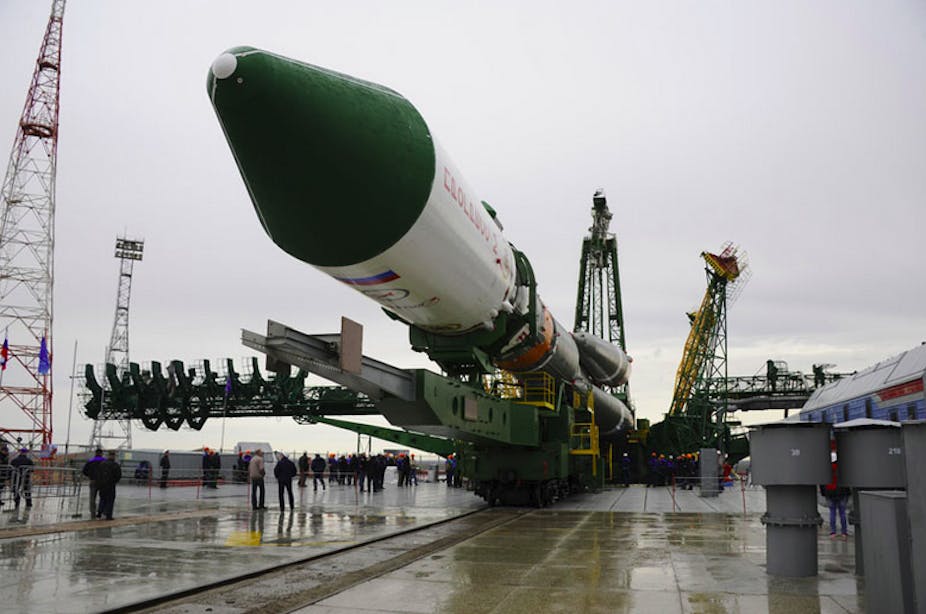A Russian spacecraft is spinning uncontrollably around Earth after it broke down travelling to the International Space Station with food and fuel supplies. The vessel, Progress M-27M, will burn up when re-entering the Earth’s atmosphere in a week or two, although there is a small chance that parts of it could crash down on the planet. The risk to us humans is minute – we have survived far greater objects falling back towards Earth before.
The six people currently at the ISS are not in any great danger of running out of food either, as the next supply vessel is scheduled to dock at the ISS on June 19 – long before its current food supply is due to run out in September.
The problem with Progress
Progress M-27M launched on April 28 but soon started developing some serious problems. It was not inserted into the correct orbit and ended up in what was described as an “emergency state” when detaching from the rocket used to bring it into orbit. It has only been able to establish limited communication and control with the ground.
At the moment the module is in a low safe orbit that does not endanger any other satellites or the ISS. The module was designed to burn up in high atmosphere after supplying the ISS and being filled with rubbish from the station.
As long as the engineers in Russia manage to control its path there should be no danger of the vessel reaching Earth’s surface. The problem is that since there is very limited control of the vessel at the moment, there might be a slim chance that some parts of the craft might not fully burn up. Because the majority of out planet is filled with oceans and sparsely populated areas, the probability of parts actually hitting people is tiny, however the risk cannot be reliably calculated at the moment since the trajectory of the time of re-entry is not yet clear. But if the conditions are the same as were for NASA’s Upper Atmosphere Research Satellite, which fell back to Earth in September 2011, the probability of hitting any human would be one in 3,200.
A more pressing matter might be that the six-person ISS crew run out of food. However, not only is the next supply vessel DragonX scheduled to dock at the ISS on June 19, there will also be a larger Japanese supply vessel arriving in mid-August. In the worst case scenario of no supply reaching the station, the ISS astronauts would run out of food by September 5, with a system of rationing in place from July 24. Water would run out by mid-September. Handily, the ISS has a permanently docked module that would allow the team to return safely to Earth. So overall the crew has only to put up with a delay in delivery of equipment and supplies.
Lessons from the past
Looking back into history there have been far greater objects re-entering Earth’s atmosphere and we have survived such events without tidal waves occurring or being cast into a nuclear winter. The 150-tonne MIR space station burnt up in 2001. The result? A few tourists on the remote Fiji islands captured some nice holiday snaps of fragments and heard sonic booms. The 77-tonne Skylab re-entered 1979 over the Indian Ocean without much ado. The Progress module weighs in at only approximately ten tonnes and none of its material is classed as dangerous. Therefore issues as arising from the Cosmos 954 crash in Canada in 1977 with radioactive debris is not expected either.

The main lesson learnt from this incident is that when it comes to space flight and even unmanned supply missions you always have to plan for the unexpected. The next step would be now a detailed analysis of why Progress failed, especially since the rocket and module are similar to the ones used for manned missions carried out by the Russians. If it takes too long to establish the cause, it might cause a delay to the next scheduled Russian manned mission on May 26.
The problem also shows why international collaboration is essential for ensuring the safety of the ISS crew and the successful performance of a space station – and why these ties should be strengthened for future space ventures.

